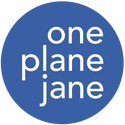
Scholarship applications are as important as a job application. For some of you, it may even determine if you get a job interview later. Here’s some advice from mentors, peers, chapter leadership, and experience:
- Know your goals and be able to articulate them, letting your personality show. Know the financial and time costs, specifically. Talk to the chief pilot at your flight school (or call several schools to compare) and have real numbers to share, based on both possible (minimum) and probably (average) completion rates. Be able to show how you will accomplish your goals with or without the scholarship.
- Know what you are applying for. Every scholarship application is different. One generic essay and application simply just isn’t good enough.
- Print the list of requirements for each scholarship. Make sure you meet them. Gather all supporting documents.
- When including a copy of your medical, make sure it isn’t all wrinkled from being in your wallet for years. If it is, get a new one. This advice comes directly from my 99s chapter leadership. Make sure you have the proper class of medical for the rating or license for which you are applying.
- Make sure copies of all documents are properly aligned. This is not the time to act like Picasso. Straight lines make a better first impression. They show you took your time. It’s like taking the time to clean the windshield of the airplane. Dead bugs may help you maintain the horizon in VFR, but they don’t make a great first impression when you open the hangar door or when you are trying to take a picture at sunset.
- Talk to your possible references as early as possible. Give them your resume (career and flying) and be sure to include community service/volunteer work. Request more letters of recommendation than you need and then choose the best ones (your references will never know; this is about you, not them; and they want to support you anyway). Again, recommended by 99s chapter leadership.
- Start writing your essay now. Write the truest essay your can, with passion. Finish it. Put it away for a week. Take it out, read it, and edit it. Then send it to two friends or colleagues - one in aviation and one who knows almost nothing about aviation. Ask for feedback and do not take it personally. Edit for grammar as if your most demanding English teacher were grading your paper.
- Elicit the support of your chapter leadership, if applicable for your desired scholarship. This is critical, especially since the 99s have changed their procedures this year and the chapters have a cap on how many applications they can send on to the international organization.
Not ready to apply this year? Here’s what to do, besides continuing to fly, to become competitive for the future:
- Join the organizations with which you are interested in applying for scholarships.
- Be active in the organization. Attend meetings. Communicate with members. Contribute to newsletters. Add value to their social media.
- Volunteer. Scholarships are cyclical. People who are awarded scholarships are already giving back to their communities and will continue to do so for the duration of their career. It is in their character. Build and better your own character.
- Find a mentor. Better yet, find two - one a few years ahead of you and one who has achieved your long term goal. With only the latter, you may find yourself frustrated by unfairly comparing yourself to someone much more experienced than you, even though she or he likely experienced the same or similar struggles in her or his time. With only the former, you lack the experience that only comes with time. So pick two.
Didn’t get a scholarship? That’s ok! The application is but a moment in time and you will have more opportunties. Here are ways to make flying more affordable:
Study study study. Take your check ride with as few hours as possible (though with the confidence you can pass it; you are not helping yourself by wasting $500+). And solo as much as possible (why are you paying for an instructor more than you have to?)! Note: this advice applies particularly for Part 61 students.
Here’s why:
- Once you have your PPL, you can then “share time” with another licensed pilot. One flies “under the hood” and the other flies safety pilot. Switch roles halfway. Both log PIC time. The airplane then costs 50% less for each, because you share the costs.
- Don’t want to fly under the hood? Although you cannot make a profit with a PPL, you can share the costs. Invite friends and family to join you for a flight and just ask them to pitch in for fuel. Again, costs decrease for you.
Other tips:
- Fly farther/longer and rent dry (short flights are often no more economical wet or dry). Lean the engine. Be smart about where you stop for fuel - preflight preflight preflight!
- Use the sim. It’s cheaper. A lot cheaper. Check out the regulations based on the license or rating you are workings towards and maximize your sim time.
- Fly in the backseat during someone else’s lessons and offer the same during yours. You will learn from each other’s mistakes and be more efficient when you are the one paying for the flight time. This shows scholarship committees that you are fiscally responsible with your education, while being very invested in it.
